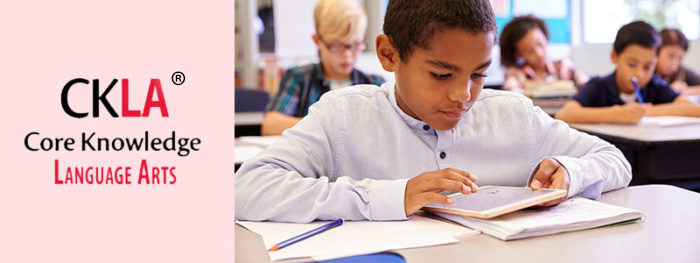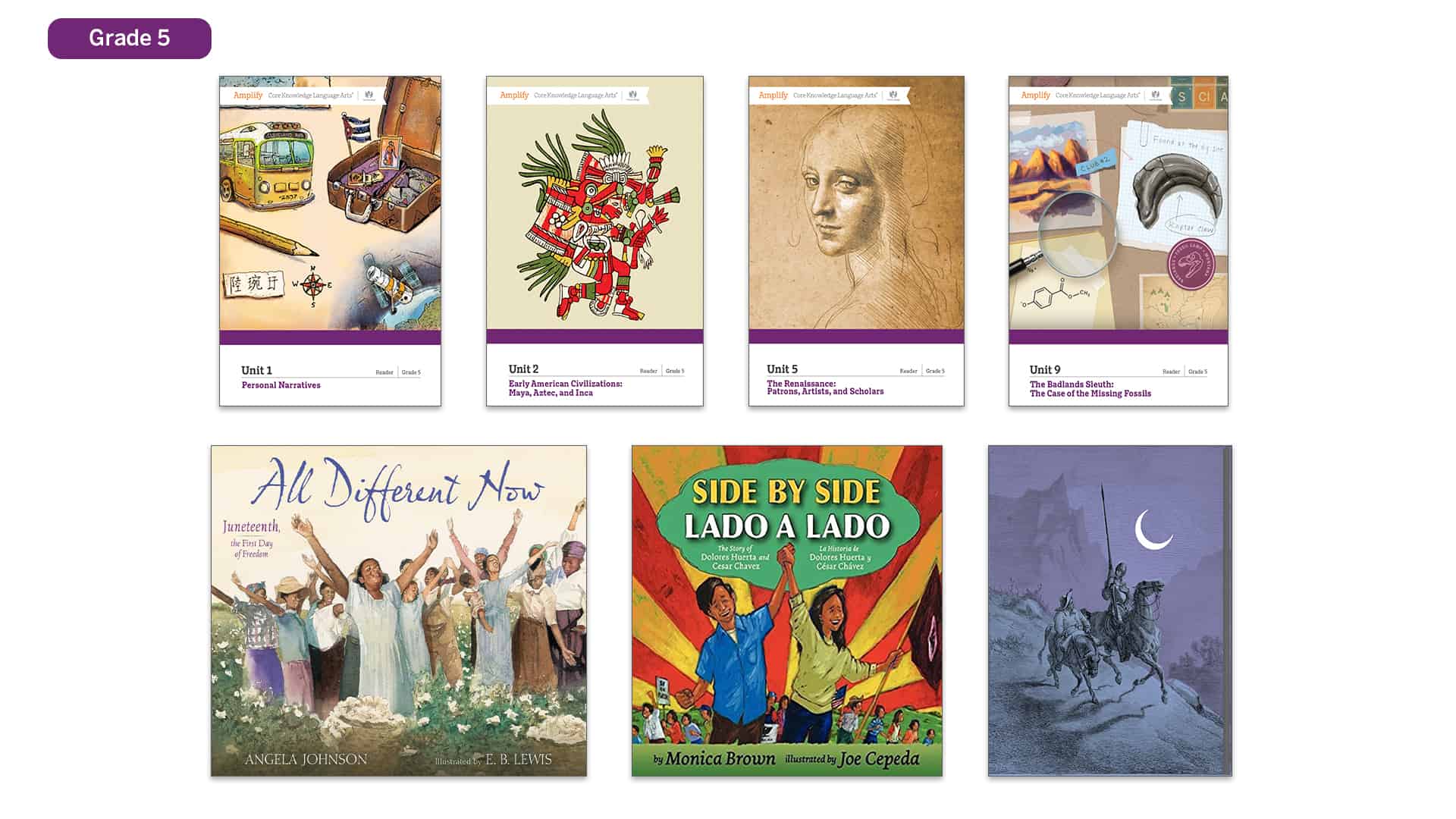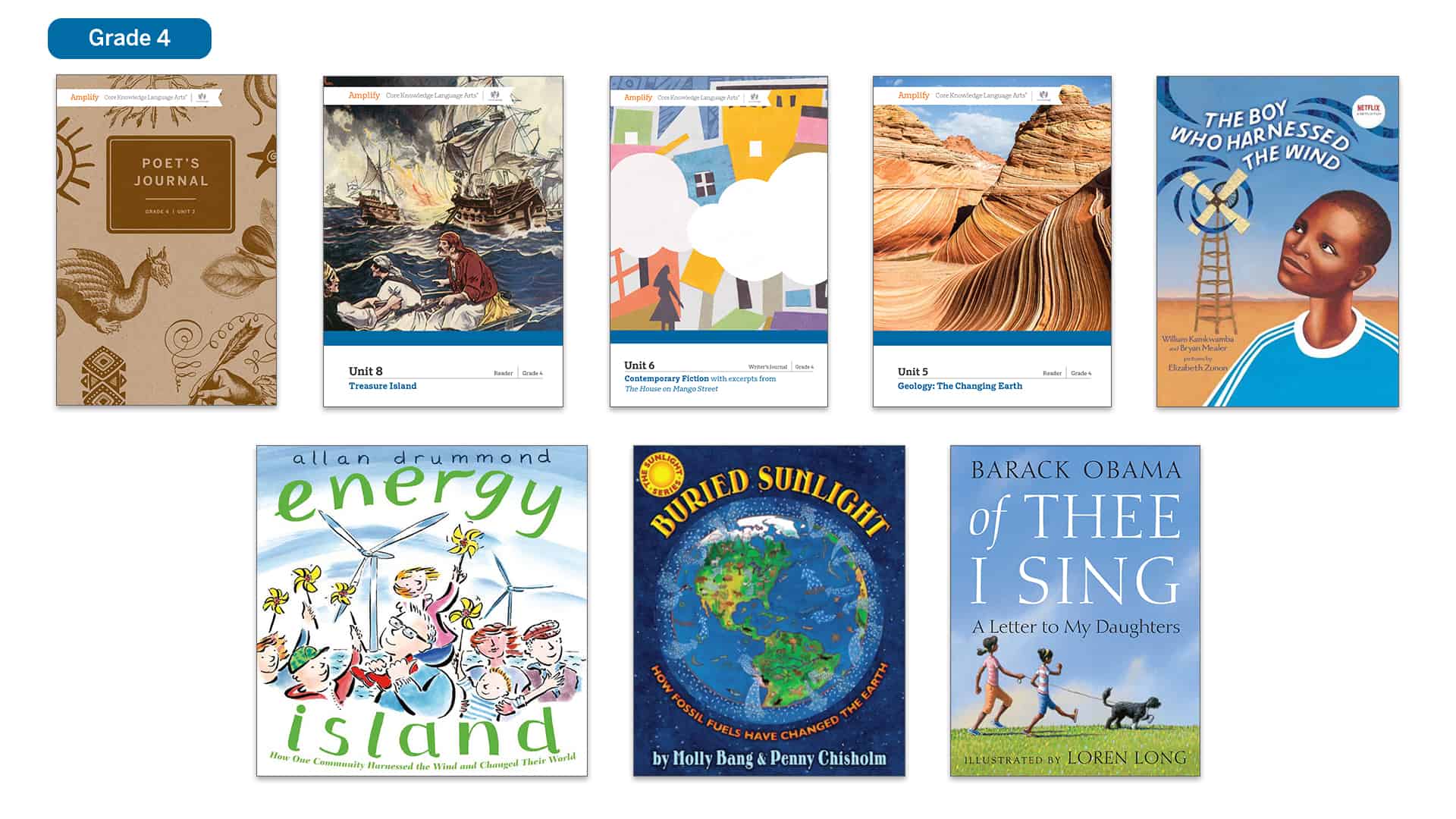Embark on an educational odyssey with Core Knowledge Language Arts, where students embark on a journey to master the intricacies of language. This comprehensive approach empowers learners with essential knowledge, nurturing their reading, writing, speaking, listening, and language structure skills, fostering a lifelong love for the power of words.
Through a systematic exploration of core concepts, students gain a deep understanding of grammar, syntax, and vocabulary, unlocking the secrets of effective communication. With a focus on developing fluency, comprehension, and critical thinking, Core Knowledge Language Arts empowers learners to navigate the world of language with confidence and precision.
Definition of Core Knowledge Language Arts

Core knowledge in language arts education refers to the foundational knowledge and skills that students need to develop proficiency in reading, writing, speaking, and listening. This knowledge includes:
- Phonological awareness: Understanding the sounds of language, including phonemes, syllables, and words.
- Phonics: The relationship between letters and sounds.
- Vocabulary: The meaning of words and phrases.
- Grammar: The rules that govern the structure of language.
- Discourse: The organization and flow of language.
Core knowledge in language arts is essential for developing language skills. It provides students with the foundation they need to understand and use language effectively in all aspects of their lives.
Core Knowledge in Reading
Core knowledge is essential for reading comprehension, fluency, and fostering a love of reading. It provides students with the background knowledge and vocabulary necessary to understand and enjoy texts.
Essential Knowledge for Reading Comprehension
- Vocabulary:A wide vocabulary is essential for understanding the meaning of words and phrases in text.
- Background knowledge:Students need to have knowledge about the world in order to understand the context of what they are reading.
- Grammar:An understanding of grammar is necessary for understanding the structure of sentences and how they relate to each other.
- Phonics:Phonics skills help students decode words and pronounce them correctly.
Core Knowledge and Reading Fluency
Core knowledge supports reading fluency by providing students with the background knowledge and vocabulary they need to read quickly and accurately. When students have a strong foundation in core knowledge, they can focus on the meaning of the text rather than on decoding words.
Core Knowledge and a Love of Reading
Core knowledge can foster a love of reading by providing students with the tools they need to understand and enjoy texts. When students have a strong foundation in core knowledge, they are more likely to be successful readers and to develop a lifelong love of reading.
Core Knowledge in Writing
Core knowledge in writing provides students with the foundational knowledge and skills necessary for effective written communication. It includes a range of essential concepts and practices that support students in organizing, structuring, and developing their writing style.
This knowledge helps students understand the purpose and structure of different types of writing, enabling them to effectively convey their ideas and arguments. It also provides a framework for organizing and structuring their thoughts, ensuring clarity and coherence in their writing.
Core Knowledge in Organizing and Structuring Writing
Core knowledge in writing includes an understanding of the various text structures used in different types of writing. Students learn about the importance of introductions, body paragraphs, and conclusions, and how to effectively transition between these sections. They also develop an understanding of paragraphing, topic sentences, and supporting details, enabling them to organize their ideas logically and coherently.
Additionally, core knowledge in writing provides students with an understanding of the different writing styles used in different contexts. They learn about the conventions of formal and informal writing, as well as the use of specific language and tone appropriate for different audiences and purposes.
Core Knowledge in Speaking and Listening: Core Knowledge Language Arts

Core knowledge in speaking and listening equips students with the essential knowledge and skills to effectively communicate their ideas and engage in meaningful conversations. It involves understanding the nuances of language, developing a rich vocabulary, and mastering the techniques of effective communication.
Essential Knowledge for Effective Speaking, Core knowledge language arts
Effective speaking requires a solid foundation in language and communication. Students need to develop a comprehensive vocabulary, including academic and domain-specific terms, to express themselves clearly and precisely. They should also understand the structure and grammar of the language, enabling them to construct grammatically correct sentences and organize their thoughts coherently.
Additionally, knowledge of different speech styles, such as formal and informal, allows students to adapt their language to various contexts.
Core Knowledge in Language Structure
Core knowledge in language structure encompasses the fundamental principles that govern the way language is organized and used. It includes knowledge of grammar, syntax, and vocabulary, which are essential for students to understand the structure of language and develop their language proficiency.
Grammar
Grammar refers to the system of rules that govern how words are combined to form sentences. Core knowledge in grammar includes understanding parts of speech, sentence structure, and verb tenses. For example, students need to know that nouns are words that name people, places, or things, and that verbs are words that describe actions or states of being.
They also need to understand how to construct grammatically correct sentences, such as by using the correct subject-verb agreement and verb tense.
Syntax
Syntax refers to the way words are arranged in a sentence to convey meaning. Core knowledge in syntax includes understanding the different types of sentences (e.g., declarative, interrogative, exclamatory), as well as the rules for word order and sentence structure.
For example, students need to know that in English, sentences typically follow a subject-verb-object word order. They also need to understand how to use punctuation marks, such as commas and periods, to clarify the meaning of sentences.
Vocabulary
Vocabulary refers to the words that a person knows and understands. Core knowledge in vocabulary includes understanding the meaning of words, as well as their different forms and uses. For example, students need to know that the word “run” can be used as a noun, a verb, or an adjective.
They also need to understand the different shades of meaning that words can have, such as the difference between “happy” and “joyful”.
Assessment of Core Knowledge in Language Arts
Assessing core knowledge in language arts is crucial to determine students’ understanding and progress. Various methods can be employed to evaluate their grasp of foundational concepts and skills.
Methods for Assessing Core Knowledge in Language Arts
Here’s a table outlining different methods for assessing core knowledge in language arts:
| Assessment Method | Description |
|---|---|
| Formal Tests | Standardized or teacher-created tests that assess specific knowledge and skills, often through multiple-choice questions, short answers, or essays. |
| Informal Observations | Ongoing observations of students’ participation, engagement, and performance during lessons, group work, or independent activities. |
| Student Work Samples | Collection of student work, such as writing assignments, projects, or presentations, that demonstrate their understanding and application of core knowledge. |
| Portfolios | Compilation of student work over time that showcases their progress and growth in language arts skills and knowledge. |
| Self-Assessment | Students reflect on their own understanding and progress through self-assessment tools or questionnaires. |
Each assessment method has its strengths and limitations, and a combination of approaches provides a more comprehensive evaluation.
Examples of Assessment Tasks
Assessment tasks that measure students’ understanding of core knowledge include:
- Identifying and analyzing literary devices in a text.
- Composing essays that demonstrate an understanding of grammar, mechanics, and style.
- Participating in class discussions and debates that showcase critical thinking and communication skills.
li>Creating presentations that effectively convey information and ideas.
These tasks assess students’ ability to apply core knowledge in meaningful and authentic contexts.
Challenges and Limitations
Assessing core knowledge in language arts presents certain challenges and limitations:
- The subjective nature of some assessments, such as informal observations or self-assessment.
- The difficulty in assessing higher-order thinking skills, such as critical analysis and creativity.
- The time constraints and resources required for comprehensive assessments.
Despite these challenges, regular and varied assessments are essential for monitoring students’ progress and providing targeted support.
al Strategies for Teaching Core Knowledge in Language Arts
Effective al strategies for teaching core knowledge in language arts include:
- Explicit instruction: Providing clear and direct instruction on core knowledge concepts, including vocabulary, grammar, and comprehension strategies.
- Modeling: Demonstrating core knowledge skills through think-alouds, guided reading, and writing.
- Practice: Providing opportunities for students to practice core knowledge skills through independent reading, writing, and speaking activities.
- Feedback: Providing timely and specific feedback on student performance to help them improve their understanding of core knowledge concepts.
- Assessment: Regularly assessing student understanding of core knowledge concepts to identify areas where additional support is needed.
Each of these strategies has its own benefits and limitations:
- Explicit instruction is effective for teaching new concepts, but it can be time-consuming.
- Modeling is effective for demonstrating skills, but it may not be appropriate for all students.
- Practice is essential for developing fluency, but it can be difficult to find time for in the classroom.
- Feedback is essential for improving student performance, but it can be time-consuming to provide.
- Assessment is essential for identifying areas where students need additional support, but it can be disruptive to the flow of instruction.
To implement these strategies effectively, teachers should:
- Use a variety of instructional strategies to meet the needs of all learners.
- Provide students with opportunities to practice core knowledge skills in a variety of contexts.
- Provide timely and specific feedback on student performance.
- Regularly assess student understanding of core knowledge concepts.
Resources for Core Knowledge Language Arts

Core Knowledge Language Arts provides a comprehensive approach to teaching language arts, emphasizing the acquisition of essential knowledge and skills. To support this approach, various resources are available for teachers, students, and parents.
Resources for Teachers
-
-*Core Knowledge Language Arts Teacher’s Guide
A comprehensive guide that provides detailed lesson plans, instructional materials, and assessment tools aligned with the Core Knowledge Language Arts curriculum.
-*Core Knowledge Online Resources
An online platform that offers access to a wide range of resources, including lesson plans, assessments, and professional development materials.
-*Core Knowledge Foundation Workshops
Professional development workshops designed to train teachers in the implementation of the Core Knowledge Language Arts curriculum.
Resources for Students
-
-*Core Knowledge Language Arts Student Workbooks
Workbooks that provide practice exercises and activities to reinforce the concepts taught in the curriculum.
-*Core Knowledge Online Games and Activities
Interactive online games and activities that make learning language arts concepts engaging and fun.
-*Core Knowledge Books and Literature
A collection of high-quality books and literature that align with the Core Knowledge Language Arts curriculum and provide students with opportunities to read and analyze diverse texts.
Resources for Parents
-
-*Core Knowledge Language Arts Parent Guide
A guide that provides parents with information about the Core Knowledge Language Arts curriculum and tips on how to support their children’s learning at home.
-*Core Knowledge Online Resources for Parents
An online platform that offers resources for parents, including articles, videos, and activities that support their children’s language arts development.
-*Core Knowledge Foundation Parent Workshops
Workshops designed to help parents understand the Core Knowledge Language Arts curriculum and how to support their children’s learning at home.
These resources provide a strong foundation for teaching and learning Core Knowledge Language Arts, empowering teachers, students, and parents to achieve success in language arts education.
Summary
In conclusion, Core Knowledge Language Arts stands as a transformative force in education, providing students with the foundational knowledge and skills they need to excel in language and communication. By embracing this approach, educators can foster a generation of confident and articulate individuals who are equipped to succeed in a world where effective communication is paramount.
Top FAQs
What is the significance of core knowledge in language arts education?
Core knowledge provides students with a solid foundation of essential concepts and skills, enabling them to develop a deep understanding of language and its various components.
How does core knowledge support reading comprehension?
Core knowledge helps students make connections between new information and their existing knowledge, enhancing their ability to comprehend and retain what they read.
What is the role of core knowledge in fostering a love of reading?
By providing students with a rich understanding of language and its nuances, core knowledge sparks their curiosity and ignites a passion for reading.
How does core knowledge contribute to effective writing?
Core knowledge equips students with the vocabulary, grammar, and organizational skills necessary for clear and impactful writing.
What are some effective strategies for teaching core knowledge in language arts?
Effective strategies include explicit instruction, guided practice, and authentic language experiences that allow students to apply their knowledge in meaningful contexts.